


A retiree has earned recognition for his commitment to protecting the iconic bulwark, Yang Feiyue reports.
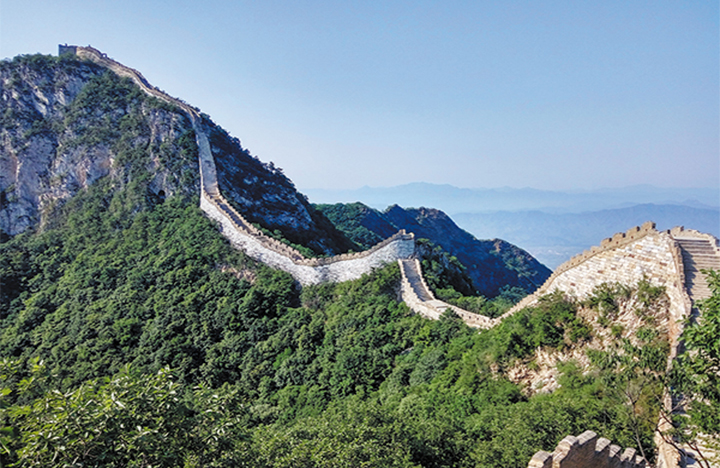
A view of the Great Wall's Jiankou section that runs on top of the green mountain ridges in Huairou district.[Photo provided to China Daily]
The winter chill that grips Beijing in December doesn't slow things down at all for Cheng Yongmao. He reaches his office in Huairou district in the capital's northeastern suburbs at 6:30 am and gets right down to business. "It's a force of habit," says Cheng, who's in his 60s and has been repairing and maintaining the Great Wall's Jiankou section in Huairou for nearly two decades.
Jiankou is widely considered one of the most dangerous parts of the Great Wall in Beijing and is known by hikers as the "wild Wall". The only way up to the bulwark is a rocky path along cliffs.
The Great Wall has been subject to natural disasters and human impact after standing for more than 450 years, and now direly needs maintenance and reinforcement.
"Construction work is generally conducted from April to October, and now it's time to prepare documents for future work," Cheng says.
Previous work has to be reviewed, and historical items unearthed during the cleaning and repairs need to be properly put in files, while construction charts for future endeavors have to be readied, he explains.
Cheng's office is filled with traces of his dealings with the Great Wall. A dozen walking sticks he made out of branches stand in the corner behind the door, next to a pile of tools he uses for tiling.
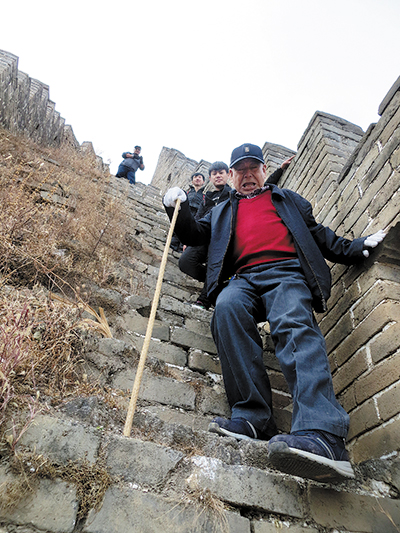
Cheng hikes on the Dazhenyu Great Wall to do restoration work.[Photo provided to China Daily]
Detailed overall plans of the Jiankou section and the restored parts in Huairou district spread across the office walls. They clearly show towers, checkpoints and various scenic spots Cheng has mapped using a computer program.
He has remained involved in providing technical guidance for the Great Wall's restoration with the Huairou cultural management department since he retired several years ago.
"Our main goal is to effectively eliminate safety hazards and reflect the ancient appearance of the Great Wall," Cheng says.
"Loose and naturally deteriorating parts have to be removed in time to avoid collapses and rainwater erosion, while (repair) materials should be applied as little as possible to follow the principle of minimum intervention," he adds.
Since 2004, Cheng and his team have overcome the precarious working conditions on the mountain ridge to restore multiple sections of the Great Wall that total roughly 20 kilometers in length.
In December, Wang was among the 10 people from all walks of life who were named "Beijing role model of the year" by the municipal publicity department.
Cheng still hikes up to this section of the Wall at least twice a week during the fieldwork season.
"I love the Great Wall to the point of obsession, and I know every blade of grass, every brick and every stone on it," he says.
He was born in a village in Huairou and began to learn tile masonry under the guidance of his uncle in 1972.
"At that time, being able to acquire a vocational skill was something to be proud of," Cheng recalls.
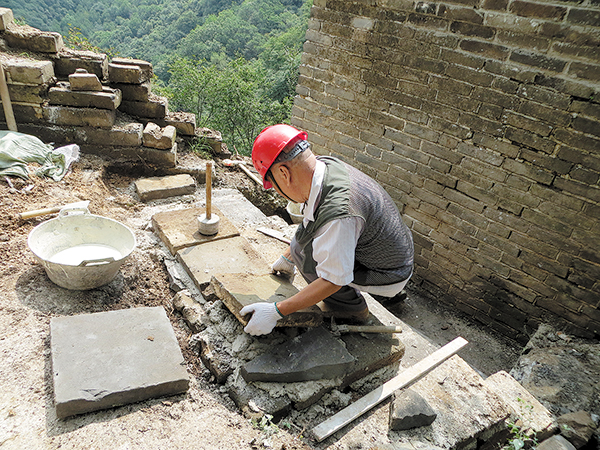
Cheng Yongmao demonstrates brick paving on the Great Wall.[Photo provided to China Daily]
After more than 20 years, he mastered the trade's techniques, such as mortaring, paving and trenching.
In 1991, he joined the district's park and ancient architecture restoration company, and participated in the reconstruction of the main hall of the Hongluo Temple, marking the beginning of his journey in the preservation of cultural heritage sites.
"It was completely different from what I had been doing before," he says.
The much bigger bricks used in the ancient temple, elegant decorative elements, such as rooftop ornaments shaped like creatures, and the use of glazed tiles were much more demanding in terms of skills, compared with the civilian construction work he'd done.
Fortunately, Cheng got to learn from Piao Xuelin, who was a senior engineer at the Palace Museum and a 15th-generation inheritor of the Xinglong School, a major carpentry and tiling shop involved in building the Forbidden City and other royal buildings in the Ming (1368-1644) and Qing (1644-1911) dynasties.
Right after he cut his teeth on the ancient architectural restoration techniques under Piao's tutelage, he signed up for a three-month training program hosted by Beijing's construction authorities in October 1991.
Cheng systematically studied the evolution of ancient Chinese architecture, especially the royal styles of the Ming and Qing eras.
Although he didn't have a higher education diploma, his practical experience enabled him to readily take in the theories, which he says in turn improved his skills significantly.
Cheng picked up other skills, such as drawing blueprints using computers.
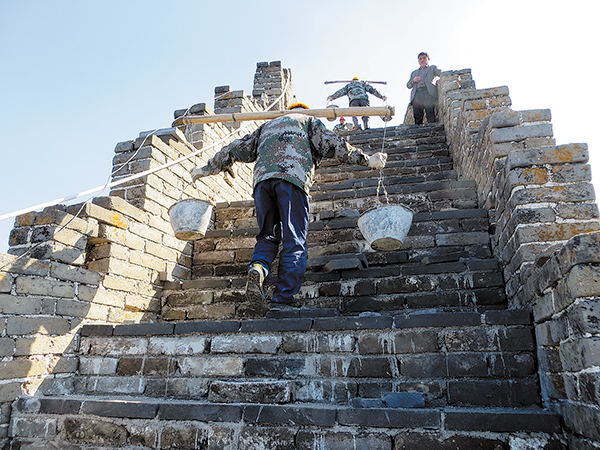
A construction worker carries restoration materials up the Great Wall.[Photo provided to China Daily]
This enabled him to take part in many key restoration projects, such as repairing the roofs of the Beijing West Railway Station and of the former residence of luminary Chinese writer Lu Xun.
Cheng received his first Great Wall assignment in 2004. It was for the Huanghuacheng section in Huairou.
"Working on the mountain ridges poses extra challenges, since everything is irregular," he says.
"You need to look around whenever you lay a tile, taking into account such factors as gradient changes … The mules can carry the repair materials to the foot of the Great Wall, but we still need to carry them up to the (construction) sites ourselves."
He was head of a construction team of dozens of members, most of whom came from mountainous areas in neighboring Hebei province and were consequently good at trekking up and down the peaks.
Still, some places were too dangerous. Ordinary people couldn't even safely stand, let alone work, in these areas, he recalls.
Some workers' feet hurt so much that they couldn't walk properly. But under Cheng's leadership, they adapted to the challenging environment and built up their strength.
As his Great Wall experience increased and relevant aptitudes improved, Cheng came up with a five-principle restoration approach.
First, no disorderly or overlapping layers should emerge amid the original stone, brick and soil. Then, restoration can take place in accordance with the slopes' conditions, with attention given to angles.
The other principles are about following the original mountain bends, and repairing the Wall only as necessary, and remaining faithfully to its historical context, Cheng explains.
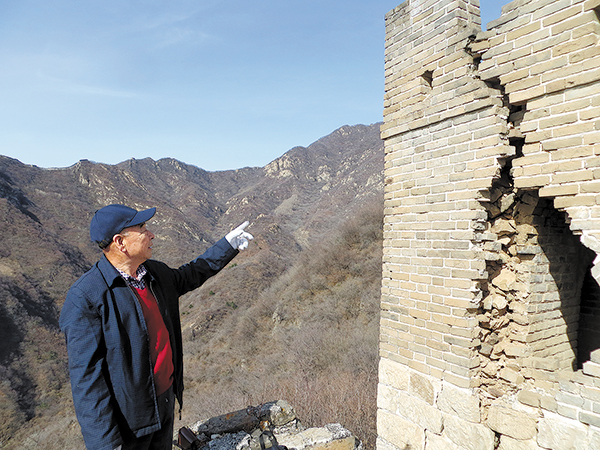
Cheng points at a watchtower.[Photo provided to China Daily]
"It's of utmost importance to inherit and pass down the things left by our ancestors while not changing the original craftsmanship to leave real things for future generations," he says.
He started to work on the Jiankou section in 2016. The toughest stretch slopes to nearly 80 degrees, and the places for walking are only a few inches wide. It's called Yingfei Daoyang (Eagle Flies Upside Down), suggesting that even an eagle would have to soar vertically, with its beak pointing up directly toward the sky to fly over this spot. Most parts of the Wall here were about to collapse before the restoration, and about 40 meters of the fortification had tumbled into a trench dozens of meters below. Neither people nor mules could move the stones, which weighed hundreds of kilograms, Cheng says.
He overcame the problem by instructing the workers to use a winch to hoist the stones back into place. Each took six or seven attempts.
After years of efforts, the slope has regained its historical appearance, without any traces of repair.
Cheng says he feels proud whenever he steps on the solid and steady ground on the Great Wall without worrying about the bricks falling off anymore.
Zhao Xiaojie has worked side by side with Cheng since 2004.
"During work, he is our leader. But off-duty, we hang out like brothers," Zhao says.
"Cheng is meticulous when it comes to work. If something is not done well, he insists on redoing it. He has a real affection for the Great Wall, and he tirelessly guides the bricklaying and the rest of the work in person … nothing seems to be able to keep him from the Great Wall."
Cheng says he's grateful to receive the Beijing role model recognition.
"It's a great honor for an ordinary person in an ordinary post, which encourages me to continue," Cheng says.
"Protecting the Great Wall is my responsibility. My physical strength is still adequate. As long as I can climb up the mountain, I'll do my best to lead my team, especially to assist them in accumulating experience and making their due contributions."
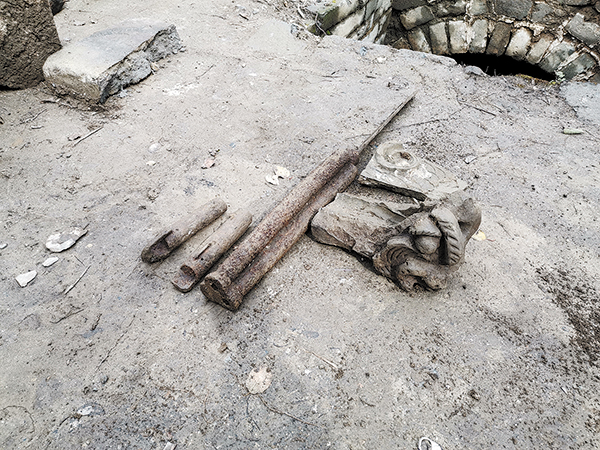
Artifacts unearthed along the Great Wall.[Photo provided to China Daily]
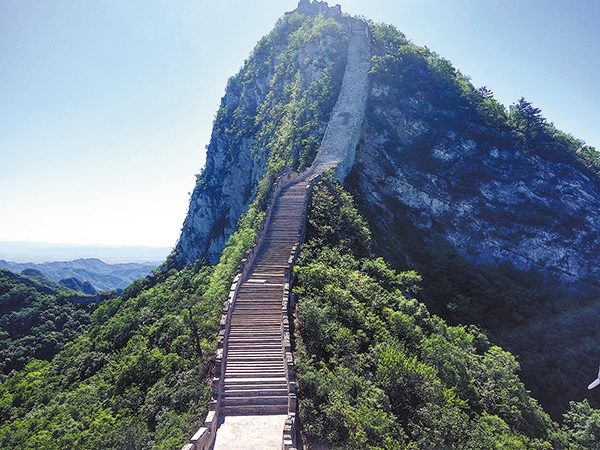
A close-up of Yingfei Daoyang (Eagle Flies Upside Down) — the Jiankou Great Wall's toughest section, which features a slope of roughly 80 degrees.[Photo provided to China Daily]
Author: Yang Feiyue
Source: <http://www.chinadaily.com.cn/a/202402/01/WS65bb11cba3104efcbdae922f_1.html>